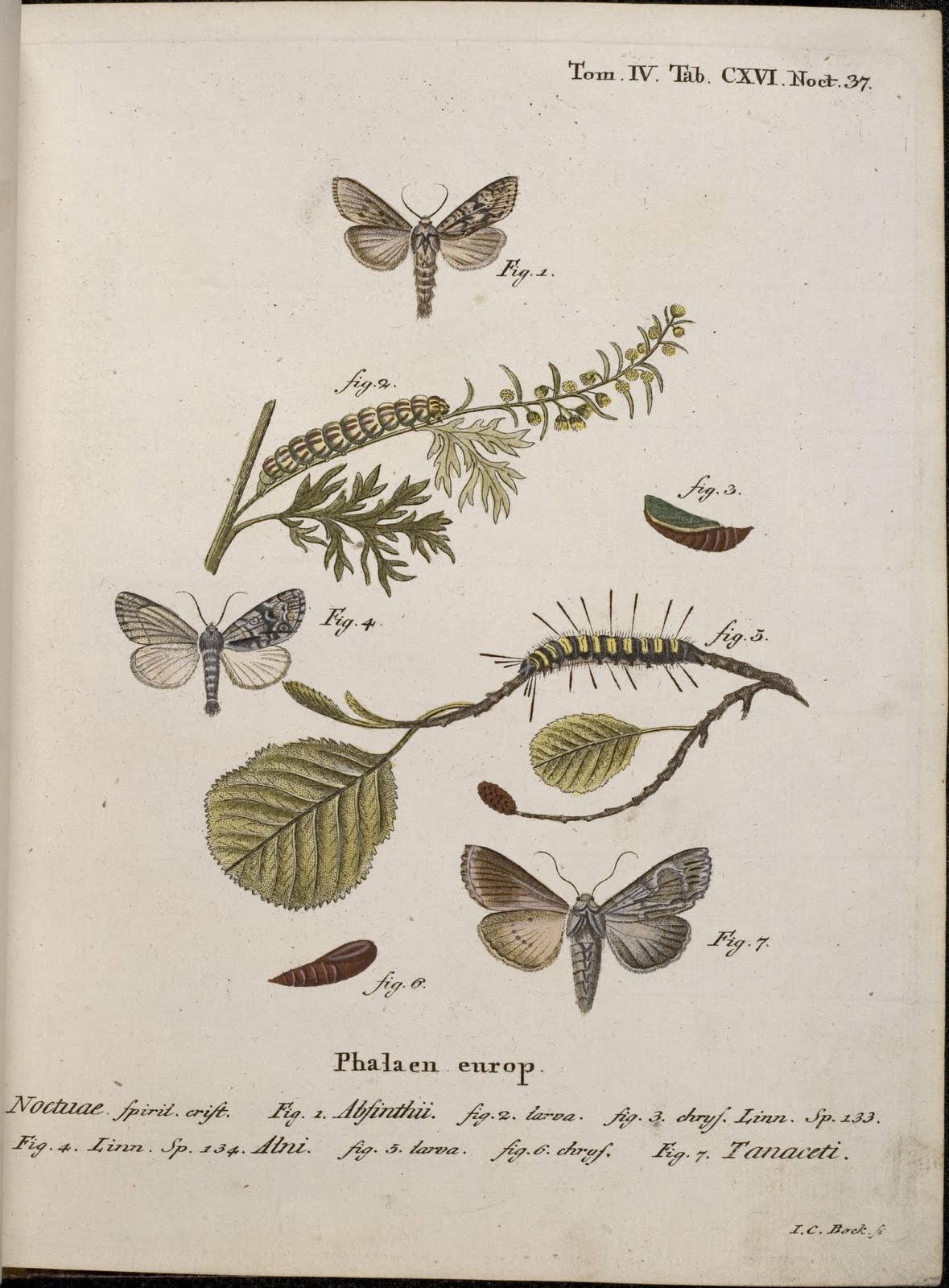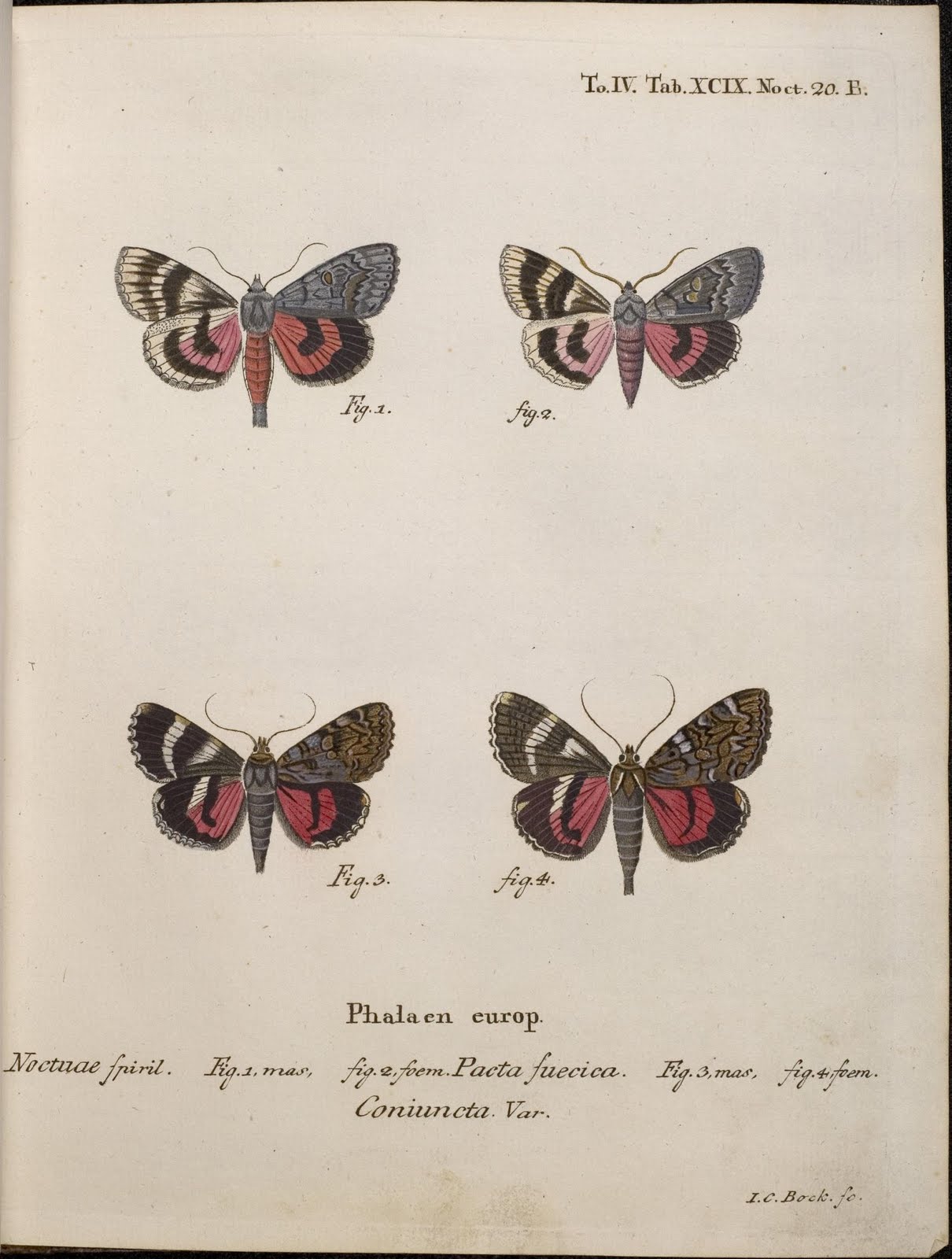Every so often it becomes necessary to dump all the random images that have accumulated on my hard drive over time. This is one of those occasions. Previous similar entries are grouped together under the 'multi' tag among the delicious bookmarks for the site. Click on any image below for an enlarged version.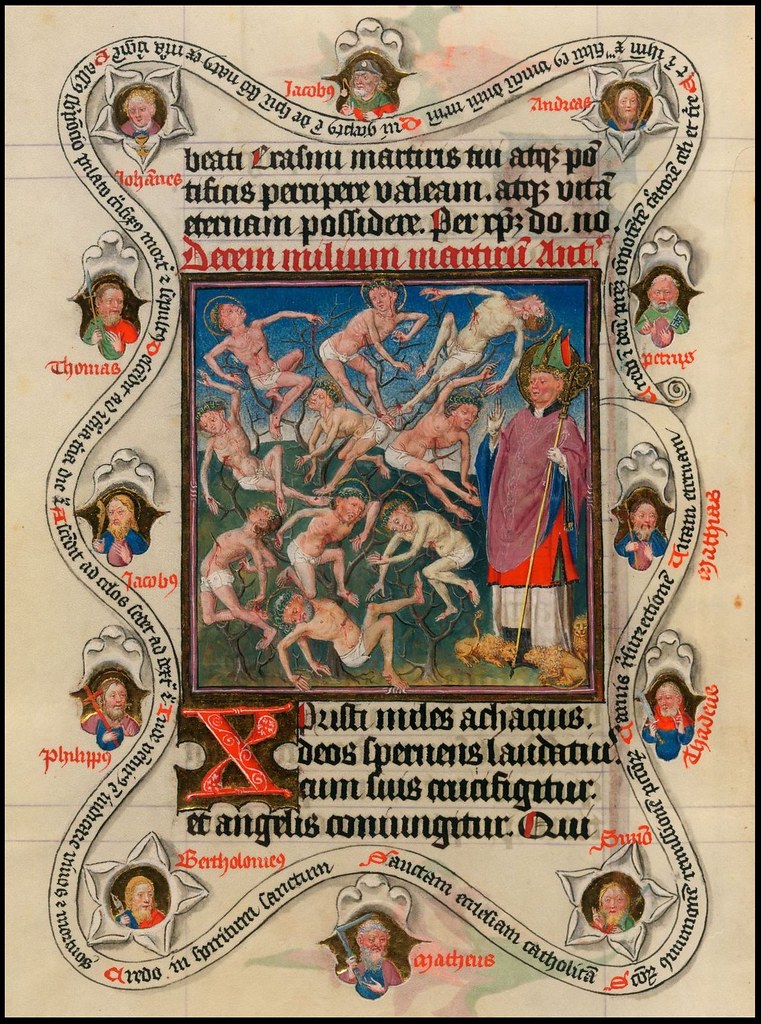
The Hours of Catherine of Cleves, in Latin
Illuminated by the Master of Catherine of Cleves
The Netherlands, Utrecht, ca. 1440
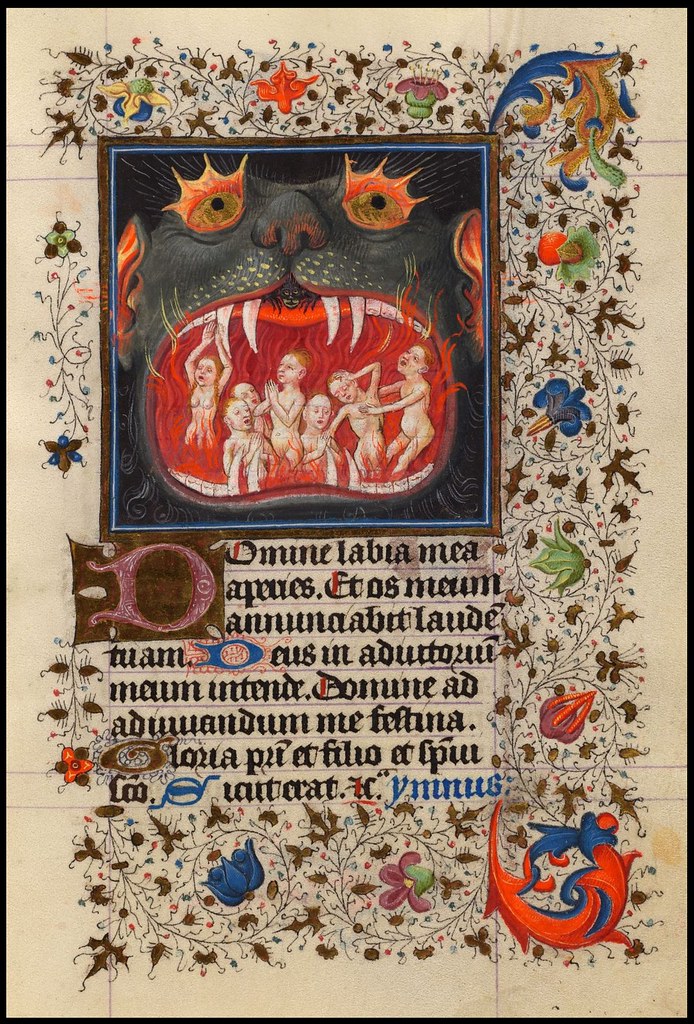
Souls Tormented in Purgatory - "..the place to which the dying man hopes to go. There his soul, like those depicted, will be cleansed of sin in expiating, if painful, fire."
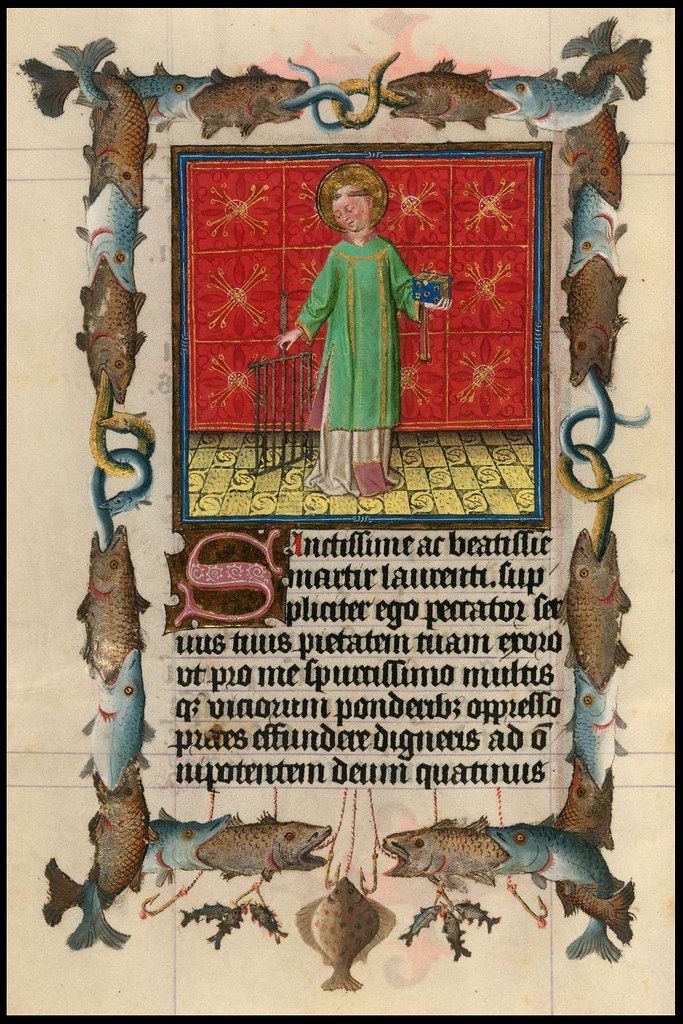
St. Lawrence is framed by a border of eels and fish, beautifully executed in gold and silver foil. The saint holds his attribute, the gridiron upon which he was fried to death. The artist made a playful parallel between Lawrence's method of martyrdom and the way fish are cooked.

Having taken root, the branch from the Tree of Mercy planted by Seth in his father's mouth grows into a healthy tree. It breaks through the slab covering Adam's grave, raising his skull in the process. The horizon glows orange: symbolically a new day has dawned. In the bottom border is depicted the sacrifice of Abraham. The patriarch's willingness to kill his son Isaac (a sacrifice stopped, as we see here, by the hand of God) symbolizes God's willingness to sacrifice his son, Christ, on the Cross. The vignette thus hints at the future of the tree painted above it in the miniature.
[the images above were spliced together from screencaps; the notes are essentially quotes]
The magnificent Hours of Catherine of Cleves forms the centrepiece of the Morgan Library's current exhibition (until May 2): Demons and Devotion: The Hours of Catherine of Cleves.
For those of us unable to attend in person, all 157 miniatures (and accompanying text pages) have been digitised and placed online. [Thumbnail page: note the full screen icon, bottom right of the page viewer]
If you're a New York local or visiting in the next couple of months, don't miss this exhibition!
"The illuminations are a joy to look at, brightly colored and lavishly gold-bedecked, minutely detailed and compositionally innovative. Through these images, we can experience the medieval world and also sense the first stirrings of the Renaissance and even 17th-century Dutch art." [An Edgy Master by N.F. Karlins]


Cropped images from 'Theatrum Mortis Humanae' (The Theatre of Human Death) by Johann Weichard (Valvasor), 1682. The book was placed online late last year by Herzog August Bibliothek, Wolfenbüttel. For background, see Mr H's post at Giornale Nuovo.
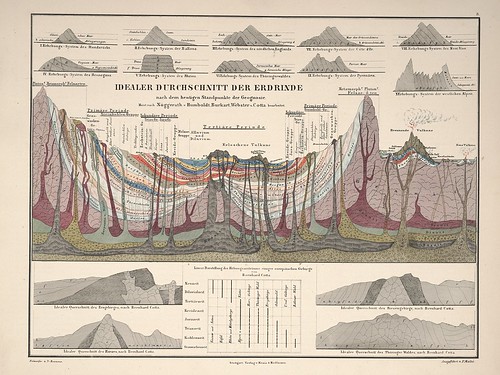
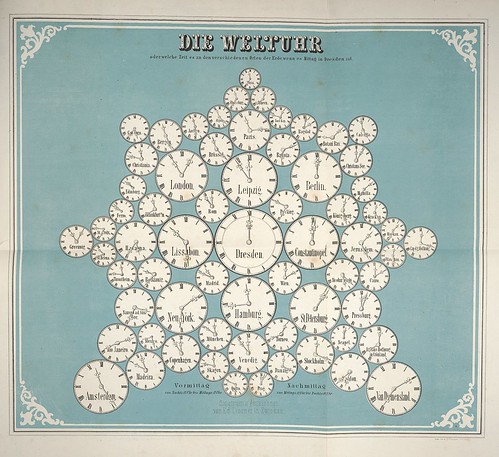
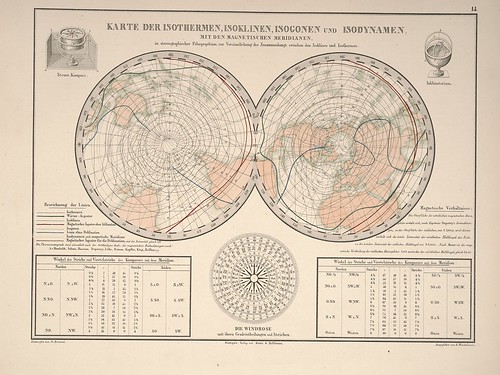
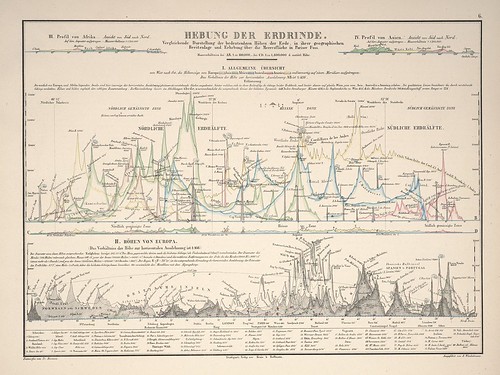
Comparative world mountain heights plotted hemispherically against distance from the equator (latitude) (I think) with Paris-centric inset of European mountain heights -vs- latitude
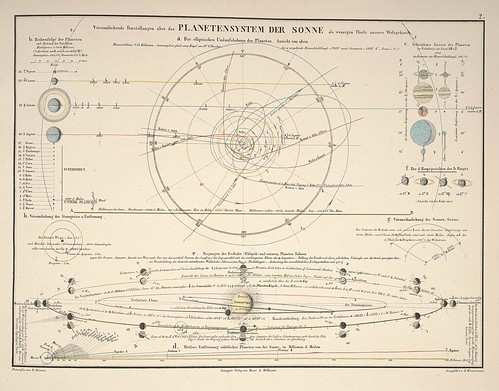
(very much: 'I think') Planar overview of the solar system showing elliptical paths of comets in relation to planet locations
19th century infographics from 'Atlas of Alexander von Humboldt's Kosmos' (1851), accessible from the wonderful Botanicus website.
"The rise of thematic or special purpose cartography, which focuses on mapping the distribution of single or multiple interrelated phenomena, had its origins in the advances in the natural sciences in the late eighteenth and early nineteenth centuries, particularly with the collection of vast amounts of scientific data and the search for innovative techniques of presenting this data graphically.
Examples of early physical geography atlases in the Library of Congress include Alexander von Humboldt's Atlas gographique et physique du royaume de la Nouvelle-Espagne (Paris, 1811), which records his observations during a 1799 to 1804 expedition to South and Central America; Heinrich Berghaus's three-volume Physikalischer Atlas (Gotha, 1845 1848), the first atlas to portray the physical geography of the world; Alexander Keith Johnston's Physical Atlas (Edinburgh, 1848), an English adaptation of the Berghaus atlas; and Traugott Broome's Atlas zu Alex. v. Humboldt's Kosmos [Stuttgart, 1851 1853], which was prepared to accompany Humboldt's five-volume Kosmos, a complete physical geography of the universe." [source]
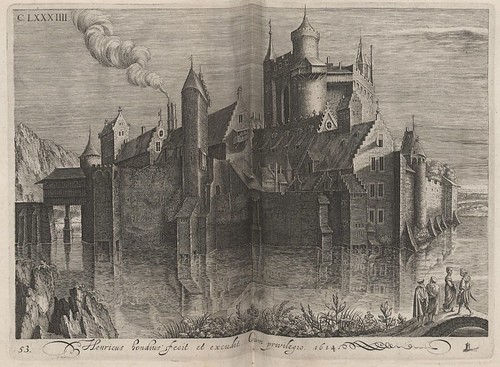
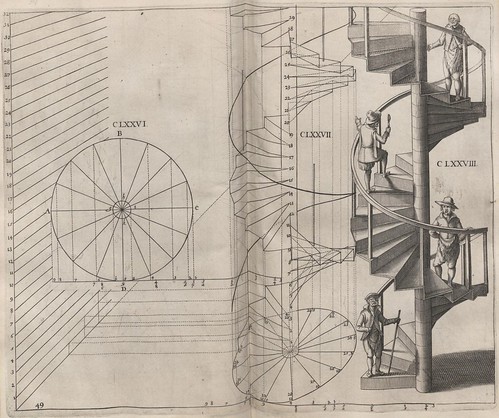
Illustrations (by Hendrik Goltzius) from one of the books on perspective by Dutch engineer and fortifications theorist, Samuel Marolois: 'Deß weitberümbten Mathematici und Ingenieurs Perspectiva' (1629), online courtesy of SLUB Dresden. Marolois was a collaborator with Hans Vredeman de Vries - [see: The Architecture of Fantasy One & Two] - and it's speculated that the staircase above may have provided inspiration for one of Rembrandt's prints. [also see Marolois' 'Geometria Theoretica' at ECHO]

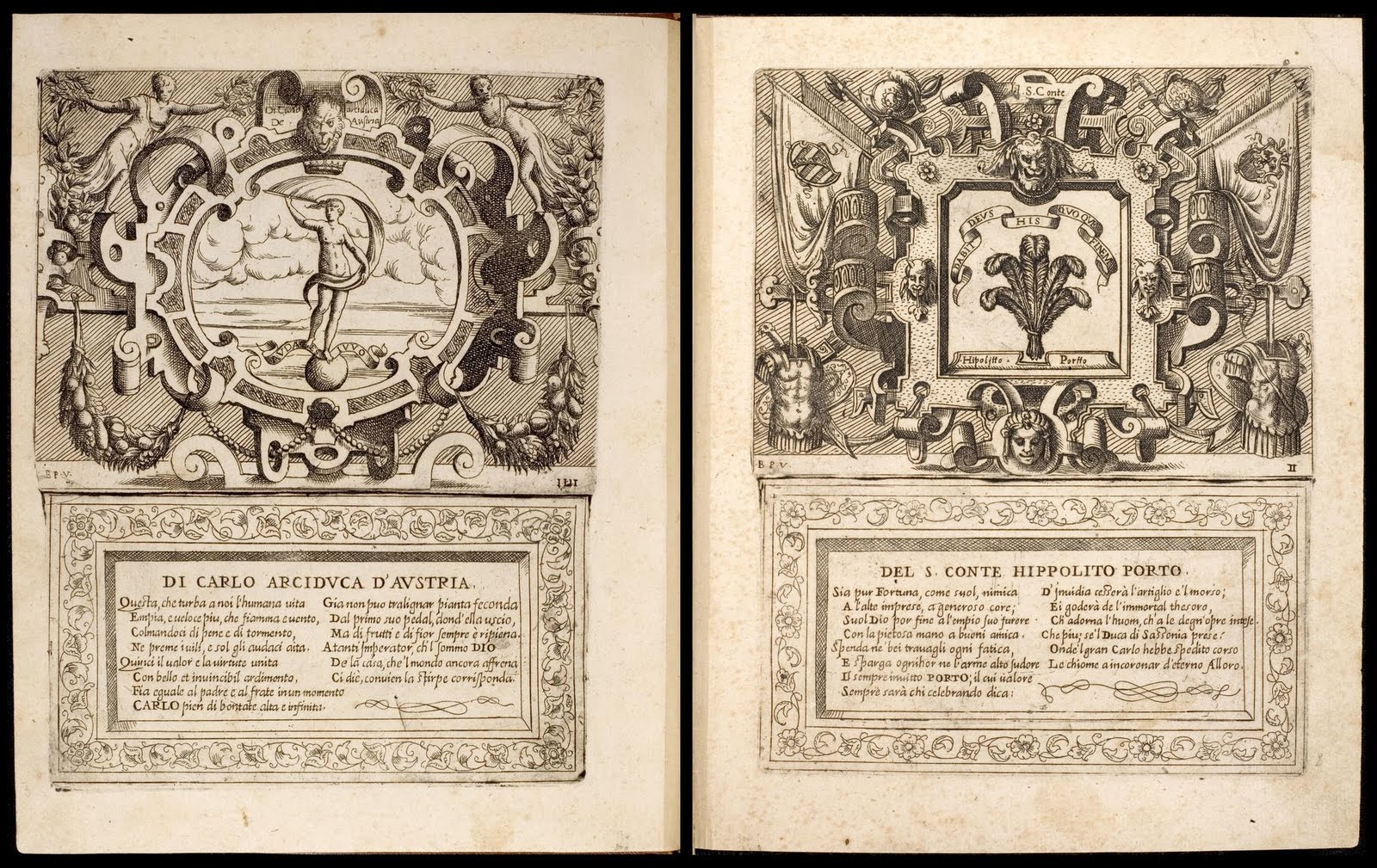
Illustrations and mottoes from the first successful Italian book* of emblematic devices, 'Imprese di Diversi Principi' by Giovanni Battista Pittoni and Ludovico Dolce, online at the University of Heidelberg [emblemata]


Screen captures from the anonymous 17th century work on vellum recorded as: 'Specimens of calligraphy and natural history illustration'
This small book is online among the turn-the-pages digital collection at the Royal Society [or djvu files at wikimedia].
"A calligraphic sample book, apparently compiled to demonstrate the skills of the unknown artist. Containing samples of writing and drawing styles, including some fine natural history drawings of freshwater animals."

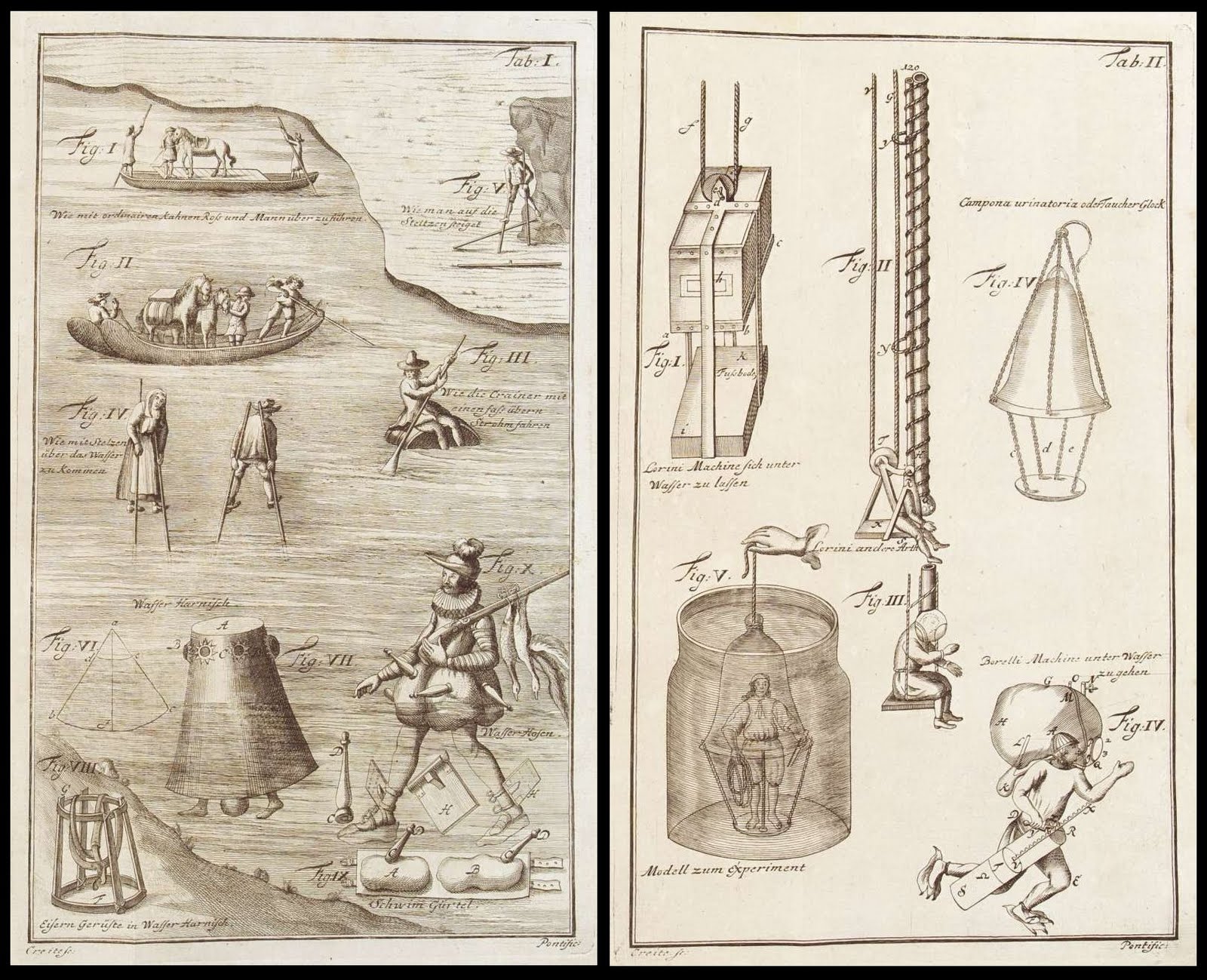
Illustrations of flotation and 'scuba' devices found in the 1726 book, 'Theatrum Pontificale', available from HAB. The author is the German physicist and mechanical engineer, Jacob Leupold [K-MODDL has Leupold's 'Theatrum Machinarum' series] & [a few more 'scuba' pics here.]

Skull in a cartouche, with a grotesque mask below and a cherub above in pen, brown ink and watercolour by Hans Friedrich Schorer, 1651 [source]

Hand-coloured engraving - {spliced together from screencaps} - of a green parrot from the JL Frisch book series, 'Vorstellung der Vögel Deutschlandes', released over thirty years from 1733. [source]


'Encyclopaedia Oder Schau-Bühne Curieuser' [at HAB] features what I believe to be allegorical illustrations of classical mythological scenes (probably in relation to theatre performance) in decorative cartouches. The 1726 work by Gottfried Rogg was engraved by Melchior Rein and others.
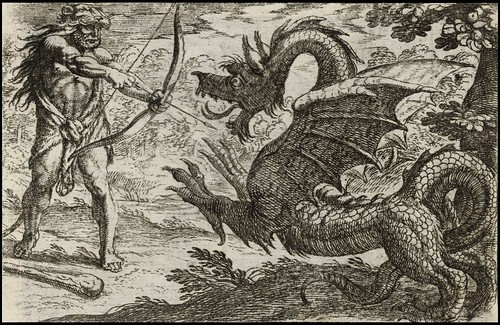
1608 etching of Hercules confronting a dragon by (or after) Antonio Tempesta , "the first professional printmaker to introduce original etchings of landscapes, battles, animals, hunting scenes and grotesques to the Roman public". I think the print series was known as 'The Labors of Hercules'. [source]

This fabulous manuscript image from 1490 depicts silver mining in Bohemia. The highly detailed scene is the frontispiece to a choir book and consists of two joined sheets of vellum. [source]
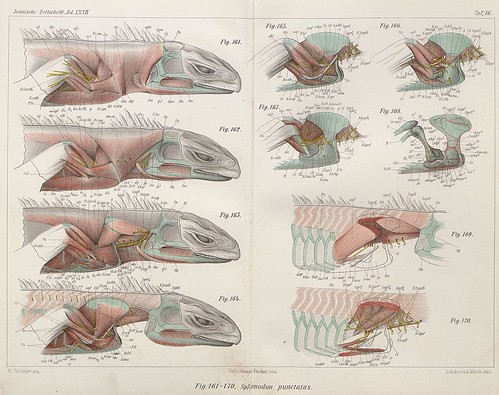
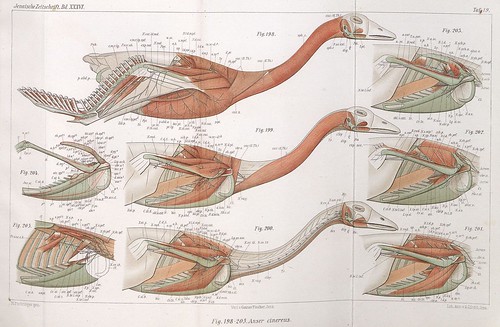
Comparative anatomy illustrations of the grey goose and sphenodontia lizard species (Tuatara presumably) found in Max Fürbringer's 'Zur vergleichenden Anatomie ..' (V. 4) 1900, available from the University of Heidelberg.

Tom from Fantasy Ink posted this futuristic space cartoon by Frank Antonchich (signed: 'scronch') from the
**Addit: George comments -
"The Frank Antoncich cartoon definitely dates from the 1950s, not the 1940s, despite what the auction record said. The X-Sue is a "takeoff" of the Bell X-2, a supersonic aircraft that was tested in 1955-1956. The space station is also a flying-saucer-like shape that would not have been depicted until after 1953 (at the earliest). I suspect a more likely date is 1957, in the Sputnik era."
Other things... from the Twitter feed:
- The British Library recently commenced a Digitised Manuscripts Blog.
- Laura has a great post on birds in Medieval manuscripts at Bookn3rd.
- Yale librarian Mike Widener has been posting an extensive series of entries in relation to an exhibition at the Lillian Goldman Law Library: Reused, Rebound, Recovered: Medieval Manuscript Fragments in Law Book Bindings. [see the flickr set]
- Prints and paintings from history depicting 'madness' [LARGE page load]





